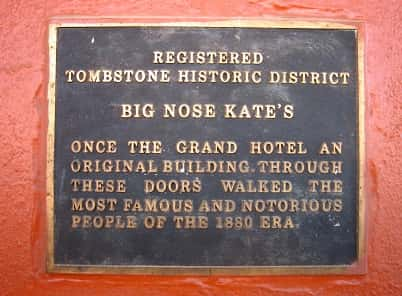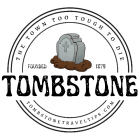
But How Many Were Saved & Verified as Original?
The Town Begins to Appreciate the History
In 1903 the 1st car arrived in Tombstone. A few citizens wanted them. Many more were skeptical! Then police became involved in these trending purchases. In 1916 a traffic ordinance was passed. Officers were rigorously enforcing its directives. But traffic was bringing tourism, those interested in traveling historic Rt. 80, aka “Broadway of America.”

A 1903 Packard
George H. Kelly was the Epitaph editor in the later 1920s. He realized 1929 was the 50 year anniversary of Tombstone’s establishment. He took the lead in enlisting help to organize the city’s first “Helldorado.” Some from its historical era attended. It was a great success for drawing publicity nationwide.
Restoration Commission
Some citizens were concerned that historic buildings were being razed. They knew it was important to preserve important ones. This commission was formed & they began efforts to renovate. The Crystal Palace in 1948, Schieffelin Hall in 1950. They were instrumental for passage of Ordinance 146 in April 1954. It created the restoration zone, requiring buildings therein to have an 1883 appearance.

The Restoration Zone had Specific Appearance Requirements
From this work the National Park Service was inclined to survey the town. They recognized buildings from 1880s that existed: Bird Cage Theatre, Schieffelin Hall, the Courthouse, City Hall, St. Paul’s Episcopal Church, & others. They named the City of Tombstone a National Historic Landmark in the summer of 1961. Officially proclaimed in 1962.

Credit: WJMcGuire220

National Historic Preservation Act of 1966
This act recognized the value of historical archaeology in the U.S. It created the National Register of Historic Places, an official List of National Historic Landmarks & authorized State Historic Preservation Offices. Tombstone Arizona got an additional boost from this legislation. In 1972 an in-depth project published: “A Plan for the Creation of a Historic Environment in Tombstone, Arizona.”
In Feb. 1972, Tombstone City Hall was placed on the National Register. The original Sacred Heart Catholic Church was on the Register in May 1976.

Now Functions as the Parish Hall
Side benefits ensued from the promotion of the Tombstone Historic District. For instance, Project Boardwalk had begun. Donations were taken, with a matching grant from Arizona State Parks. Altogether $23,000 enabled a stretch of boardwalk completion on Allen Street in 1975. It covered both sides from 3rd to 6th Streets.

History & Preservation
The Tombstone Historic District encompasses six city blocks in “downtown” Tombstone Arizona. Many of the buildings are privately owned. A few are city owned.
Tombstone Travel Tips fully supports the historical aspect of Tombstone Arizona. We hope all private ownership in the historic district, and even outside it, within the original town-site, will respect the town’s history. And will want to reflect that in the appearance, and upkeep of the city.
There are often historical remembrance events that make one want to know the true facts for people who roamed the Tombstone area & the Old West. What was their true story? And what happened to them – do we even know? Can we discover the authentic historical details?
And we enjoy sharing what we find with you.
We hope we’ll see you in town sometime, seeing areas where they spent time – back in the 1800s.
Let us know if you’ll be going to an upcoming event! Tell us how you liked any of them, or what you visited here! Just reply to this newsletter for easy input! (Let us know if we can use your comments – & how to credit you.)
